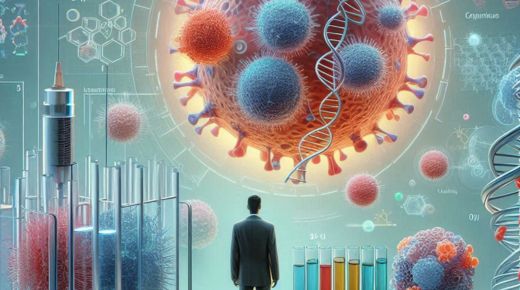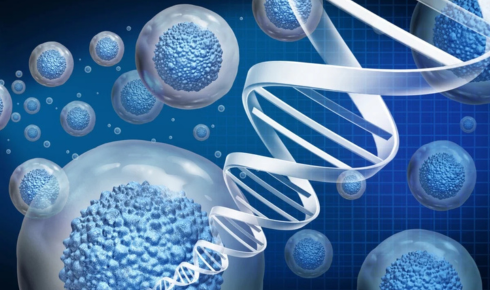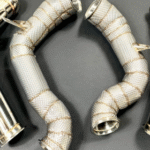In the world of biotechnology, the production of recombinant antibodies has significantly impacted research, diagnostics, and therapeutic fields. Recombinant antibodies are engineered in laboratories to target specific proteins, making them highly effective for various applications. To create these high-quality proteins, mammalian cell systems, particularly CHO cells, are frequently utilized. These systems enable efficient protein expression and facilitate post-translational modifications crucial for antibody function.
Let’s delve deeper into the benefits of using mammalian expression systems, the role of CHO cells, and why they are instrumental in antibody expression.
What is a Recombinant Antibody?
A recombinant antibody is an artificially produced antibody that scientists create using gene cloning and engineering techniques. Unlike traditional antibodies generated by the immune system, recombinant antibodies are synthetically produced in the lab, allowing for a highly targeted approach.
Recombinant antibodies are advantageous because they offer reproducibility, consistent quality, and specificity. This precise targeting makes them valuable in therapeutic fields, diagnostics, and biomedical research, where they help detect or neutralize specific molecules.
Why Use Mammalian Cells for Protein Expression?
Protein expression in mammalian cells is essential when creating recombinant antibodies that closely mimic human proteins. Mammalian cells have complex biological machinery capable of performing post-translational modifications like glycosylation, which is critical for producing proteins similar to those naturally occurring in humans. Unlike simpler systems like bacteria, mammalian cells provide the necessary folding and modifications for complex proteins, making them ideal for therapeutic antibodies.
In particular, using mammalian expression systems ensures that antibodies achieve proper structure and functionality. This feature is essential for antibody therapies, where the protein’s stability, efficacy, and compatibility with human cells are crucial for success.
The Role of CHO Cells in Antibody Production
Among the various types of mammalian cells used for protein production, CHO cells (Chinese Hamster Ovary cells) are the industry standard. These cells have earned their place in biotechnology due to their adaptability, ease of culture, and scalability for large-scale antibody production.
CHO cells are highly efficient for antibody expression because they can be easily modified to enhance protein yield and quality. Additionally, CHO cells grow well in suspension cultures, allowing scientists to produce antibodies in large quantities with high consistency. This adaptability makes them especially valuable for pharmaceutical companies needing to produce antibodies for therapeutic applications, such as cancer treatments and autoimmune therapies.
Mammalian Expression Process for Recombinant Antibodies
The production of recombinant antibodies using mammalian expression systems typically involves these steps:
- Gene Cloning: The gene encoding the desired antibody is inserted into a plasmid vector. This vector acts as a carrier, introducing the gene into CHO cells or other mammalian cells.
- Transfection: The plasmid vector is introduced into the CHO or mammalian cells, allowing them to incorporate the gene into their own genetic material.
- Protein Expression: Once inside the cells, the gene begins producing the recombinant antibody protein. Mammalian cells assemble, fold, and perform necessary modifications to the antibody.
- Harvesting and Purification: The antibodies are harvested from the cell culture medium, followed by purification to remove impurities and ensure the highest quality for research or therapeutic use.
This controlled process within mammalian cells enables scientists to produce antibodies with specific attributes, like higher binding affinity or increased stability, that meet the demands of modern medicine.
Applications of Recombinant Antibodies in Research and Medicine
Recombinant antibodies, produced through mammalian expression in CHO cells, have wide-reaching applications:
- Therapeutic Applications: Recombinant antibodies are critical in treating diseases such as cancer, autoimmune disorders, and infectious diseases. They can specifically target harmful cells or molecules, reducing side effects compared to conventional therapies.
- Diagnostics: In diagnostics, recombinant antibodies are used in tests and assays to detect diseases at an early stage. Their precision makes them reliable tools for identifying biomarkers in blood tests, imaging, and other diagnostic techniques.
- Research: In laboratories, recombinant antibodies are used to explore cellular processes, protein interactions, and other biological phenomena. Their specificity allows researchers to investigate complex cellular pathways and develop new treatments.
Advantages of Using Mammalian Cell Systems for Antibody Expression
Producing recombinant antibodies in mammalian cell systems like CHO cells offers several key advantages:
- Human-Like Modifications: Mammalian expression systems allow for post-translational modifications, which are essential for antibody functionality in human cells.
- Consistency and Quality: Using recombinant DNA technology ensures high-quality and consistent production of antibodies, which is vital for therapeutic applications.
- Scalability: CHO cells are easily adaptable to large-scale production, making them ideal for industries that require bulk antibody production.
Conclusion
The production of recombinant antibodies using mammalian cell systems, especially CHO cells, has transformed the biotechnology field. This process enables scientists to produce high-quality proteins that mimic human antibodies, making them invaluable in therapeutics, diagnostics, and research. With advancements in mammalian expression and antibody expression technology, the future holds even greater potential for breakthroughs in healthcare and medicine, further solidifying the importance of these technologies in modern science.










